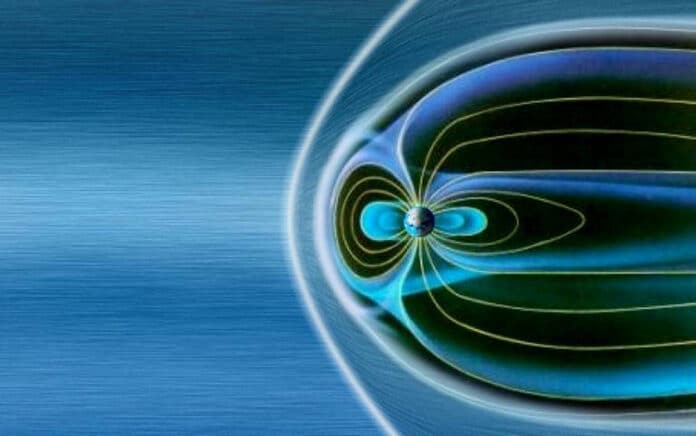The Earth’s magnetosphere and its bow shock, which is formed by the interaction of the supersonic solar wind with the terrestrial magnetic field, constitute a rich natural laboratory enabling in situ investigations of universal plasma processes. A foreshock with vigorous wave activity forms under the appropriate interplanetary magnetic field conditions upstream of the bow shock. These waves are also observed inside the magnetosphere and down to the Earth’s surface, but how they are transmitted through the bow shock remains unknown.
A new study involving UCL has uncovered how magnetic waves are transmitted past a standing shock wave, known as the bow shock. Scientists looked at magnetic waves ahead of the Earth’s shock (bow shock), known as foreshock waves. These are created by particles bouncing off the shock and traveling back toward the Sun.
Using a computer model called Vlasiator, scientists simulated the physical processes at play in transmitting these waves. They found waves on the other side of the shock with almost identical properties as in the foreshock. They then confirmed the presence of these waves using observational data from NASA’s Magnetospheric Multiscale (MMS) mission.
Co-author Dr. Daniel Verscharen (UCL Mullard Space Science Laboratory), who has world-leading expertise in analyzing plasma waves and whose code was used to interpret the MMS data, said: “Shock waves in plasma are much more difficult to understand than when they occur in the air. There is a lot of space between the particles, and collisions between them are rare.
“However, it is a universal process occurring throughout the Universe. We cannot send a spacecraft to a supernova – so we are lucky to be able to study plasma shock waves in our cosmic neighborhood.”
Lead author Dr. Lucile Turc of the University of Helsinki said: “At first, we thought that the initial theory proposed in the 1970s was correct: the waves could cross the shock unchanged. But there was an inconsistency in the wave properties that this theory could not reconcile, so we investigated further.
“Eventually, it became clear that things were much more complicated than it seemed. The waves we saw behind the shock were not the same as those in the foreshock, but new waves created at the shock by the periodic impact of foreshock waves.”
“The numerical model also pinpointed that these waves could only be detected in a narrow region behind the shock and that they could easily be hidden by the turbulence in this region. This likely explains why they had not been observed before.”
Journal Reference:
- Turc, L., Roberts, O.W., Verscharen, D., et al. Transmission of foreshock waves through Earth’s bow shock. Nat. Phys. (2022). DOI: 10.1038/s41567-022-01837-z
